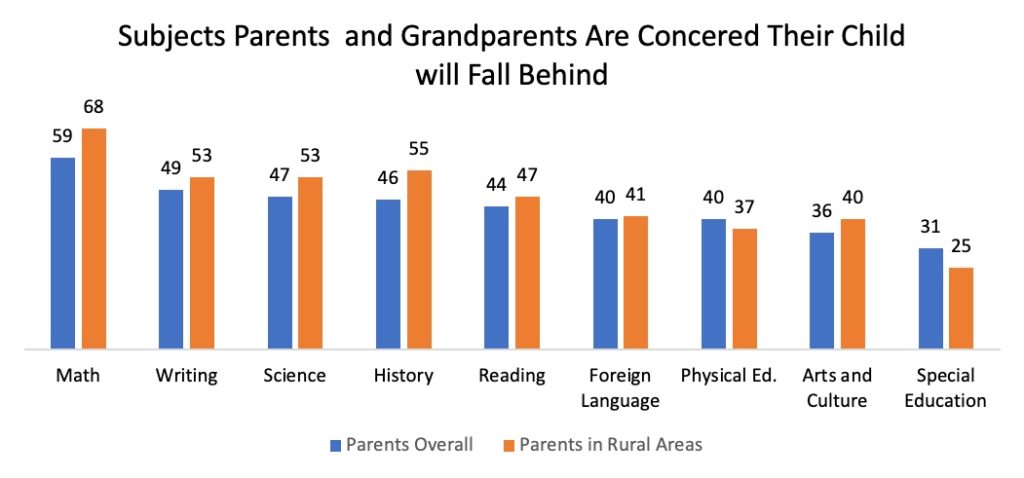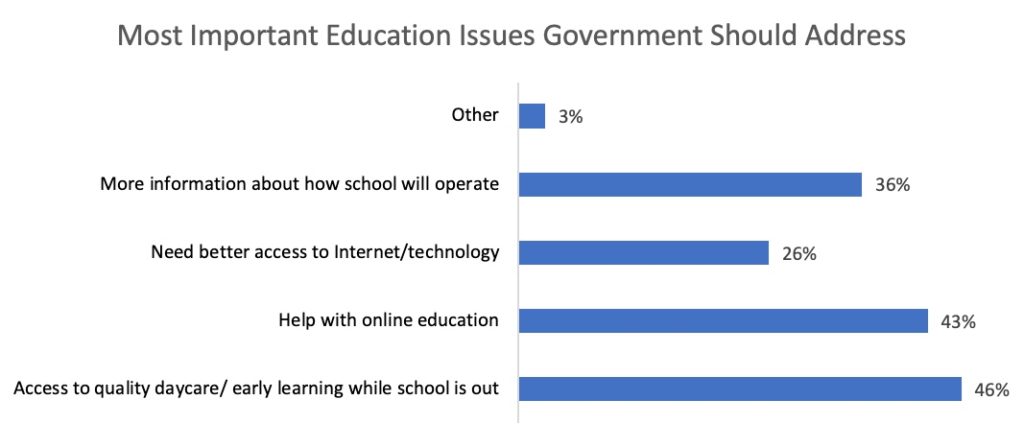The spike in COVID-19 cases across the country is forcing many school districts to reconsider plans to return to in-person instruction. The announcement this week that Los Angeles and San Diego Unified School districts would continue with distance learning may trigger a wave of other large districts to do the same. As the realization that home-schooling will be the norm for many families, we draw from the Abriendo Puertas/Latino Decisions National Parent Survey to discuss some of the challenges Latino families are going to face in the fall if significant steps are not taken to invest in their capacity to support their children’s education.
Latino families gained experience with home-schooling as schools across the country shut down in-person education in March. Although having some time to prepare for distance learning may help improve families’ experience, the survey makes clear that Latino households are apprehensive about the prospect of distance learning. This is reflected in 83% of survey respondents being concerned that their children’s school may either have to start in the fall with home schooling or go to that model at some point during the academic year. An identical percentage are concerned that their children are not learning enough from on-line schooling, and will fall behind educationally.
For many Latino parents, their unfamiliarity with the subject matter and assignments being taught plays a significant barrier in providing their children with the academic support they need. For example, 65% of Latino families report that it is difficult to help their kids with on-line schooling because they are not familiar with the class subjects and assignments. This is even higher for respondents who live in rural areas of the country (76%) and those with less than a high school education (73%). As reflected below, when asked which subjects they were most concerned their children are falling behind in, math (59% overall, 68% for rural respondents), writing (49% overall, 53% for rural respondents), and science (47% overall, 53% for rural respondents) were the most common subjects .
When asked about potential remedies to these challenges, 74% of parents surveyed expressed desire for more one-on-one tutoring and 76% noted that more direct instruction (even if virtual) from teachers would be helpful. As reflected in the figure below, immigrant families are even more interested in ensuring that their children have tutoring available to keep them from falling behind and to increase regular communication with teachers. As schools prepare for the fall, developing strategies for implementing these suggestions could greatly improve the educational experience for Latino and immigrant families.
The most basic, but arguably most important step states can take to help families prepare for the fall is to improve access to high speed internet and the on-line tools that many schools are likely to use in the fall. Getting help with on-line education was by far the most cited issue among Latino families at 43%, with another 26% reporting that they need better access to the Internet or technology.
The other major challenge facing Latino families is finding quality child care or daycare in the fall, an issue identified by 46% of respondents in the figure above. The survey reveals that roughly half of Latino parents or grandparents are working outside the home. This is a concerning data-point as child care centers are struggling to survive the COVID-19 crisis and limiting options for families. How will working class families and essential workers manage if their options for childcare are limited or non-existent? Addressing this challenge will require creative approaches such as provisions for work-place child care and flexible scheduling. States’ ability to ramp up their economies hinges largely on addressing child-care. Urgency is needed to find solutions and collaborative approaches that will allow working families to find ways to care for their children while they work.
A strong majority of Latino parents and grandparents in our survey support continuing with distance learning in the fall (68% Support), which should give districts confidence that believe distance learning is the only way to provide safe learning environments for teachers and children. However, if online instruction is to continue, schools must do more to support Latino parents and grandparents. There needs to be more emphasis in ongoing communication with parents, providing tools and resources for distance learning, and creating a personalized on-line environment where students can stay connected to teachers and tutors.
Gabriel R. Sanchez is Professor of Political Science at the University of New Mexico and Principal at Latino Decisions
Edward D. Vargas (@edwarddvargas) is an Assistant Professor in the School of Transborder Studies at Arizona State University
Adrián A. Pedroza is the National Director of Strategic Partnerships for Abriendo Puertas/ Opening Doors (ap-od.org)
Anaís López is an Analyst at Latino Decisions





